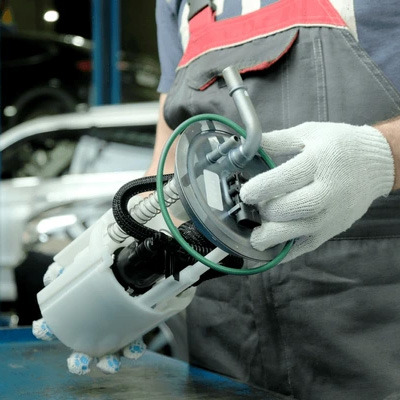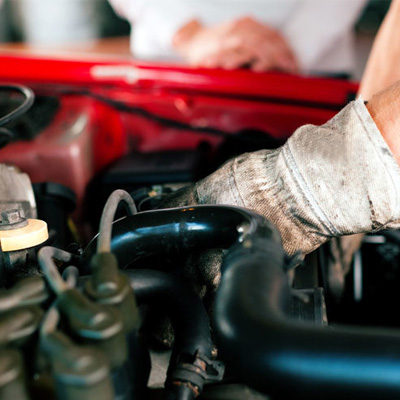When you turn the key in your car’s ignition and nothing happens, the frustration is palpable. It’s a problem that most drivers dread—your car refusing to start. While many potential issues can lead to this situation, one critical component often stands out as the main culprit: the fuel pump. In this article, we will provide a comprehensive, step-by-step guide on how to diagnose a faulty fuel pump and resolve startup issues, ensuring you’re well-equipped to handle this common car trouble.
What Is a Fuel Pump and Why Does It Matter?
The fuel pump is an essential part of your car’s fuel system, responsible for transporting fuel from the gas tank to the engine. This ensures that the engine receives the right amount of fuel needed for combustion. If your fuel pump malfunctions, it disrupts the fuel supply, making it impossible for your car to start.
The Role of the Fuel Pump in Starting Your Car
A functional fuel pump is crucial for proper engine performance. It maintains the appropriate fuel pressure, ensuring that the engine receives a steady, consistent supply of fuel. If the fuel pump fails, fuel delivery is interrupted, which directly affects the engine’s ability to start.

Step-by-Step Guide to Diagnosing a Faulty Fuel Pump
Diagnosing a fuel pump issue requires a careful and systematic approach. The process may seem complicated, but with the right tools and knowledge, you can pinpoint the issue and decide on the appropriate fix.
Step 1: Listen for the Fuel Pump’s Sound
When you turn the ignition key to the “on” position (without starting the engine), listen for a faint humming sound coming from the fuel tank area. This is the sound of the fuel pump priming. If you don’t hear anything, it’s a sign that the fuel pump may not be working.
Step 2: Check the Fuel Pump Relay and Fuse
If there is no sound, the next step is to check the fuel pump relay and fuse. These components control the operation of the fuel pump. A blown fuse or faulty relay can prevent the fuel pump from receiving power. Replace any damaged fuses or relays and test the system again.
Step 3: Test the Fuel Pump Pressure
A more thorough diagnosis involves testing the fuel pump’s output pressure. For this, you’ll need a fuel pressure gauge, which can be purchased at an auto parts store.
- Locate the fuel pressure test port on the fuel rail (usually near the engine).
- Connect the pressure gauge to the test port.
- Turn the ignition to the “on” position without starting the engine.
- Check the fuel pressure reading. Compare it with the manufacturer’s specifications for your vehicle.
If the pressure is too low or too high, it indicates an issue with the fuel pump.
Step 4: Inspect the Fuel Filter
A clogged fuel filter can also mimic the symptoms of a failing fuel pump. If the fuel filter is dirty or clogged, it may restrict fuel flow, causing issues similar to those caused by a malfunctioning fuel pump. Replace the fuel filter if necessary.
Step 5: Check for Electrical Issues
Fuel pump failure can sometimes be attributed to electrical issues, such as a damaged wiring harness or poor connections. Inspect the wiring and connections leading to the fuel pump for signs of wear, corrosion, or damage.

Common Causes of Fuel Pump Failure
Fuel pump failure can result from a variety of factors. Understanding these causes can help prevent future issues and ensure your vehicle remains in top condition.
1. Worn-out Fuel Pump Motor
Over time, the fuel pump motor can wear out due to continuous operation. This is especially true for older vehicles with high mileage.
2. Clogged Fuel Filter
A clogged fuel filter restricts the flow of fuel to the pump, causing the pump to work harder than it should. This added strain can lead to premature pump failure.
3. Faulty Fuel Pump Relay
The fuel pump relay controls the power supply to the fuel pump. If the relay fails, the pump may not receive the necessary power to operate properly.
4. Contaminated Fuel
Contaminated fuel, such as water or dirt in the tank, can damage the fuel pump over time. Regularly replacing the fuel filter can help reduce the chances of this happening.
5. Overheating
Fuel pumps are cooled by the fuel flowing through them. If the fuel level in the tank is too low, the pump can overheat, causing internal damage and eventual failure.

Repairing or Replacing the Fuel Pump
Once you’ve confirmed that the fuel pump is the source of the issue, the next step is to determine whether it can be repaired or needs to be replaced.
When to Repair the Fuel Pump
In some cases, the fuel pump can be repaired, particularly if the issue is related to the wiring, relay, or fuse. If the pump motor itself is still in good condition, repairs may be a cost-effective solution.
When to Replace the Fuel Pump
If the fuel pump motor is damaged or if repairs aren’t feasible, replacing the pump is necessary. While this is a more expensive option, a new fuel pump will restore proper fuel flow and ensure the vehicle starts reliably.
Conclusion
A fuel pump failure is one of the most common reasons for a car’s inability to start. Understanding how to diagnose and repair this issue can save you time, money, and frustration. By following the steps outlined in this guide, you can effectively determine whether your fuel pump is the culprit and take the necessary steps to restore your vehicle’s performance.
Don’t forget, if you’re looking for high-quality replacement parts or accessories for your car, check out our products at QPLCAR.com.
 >
>